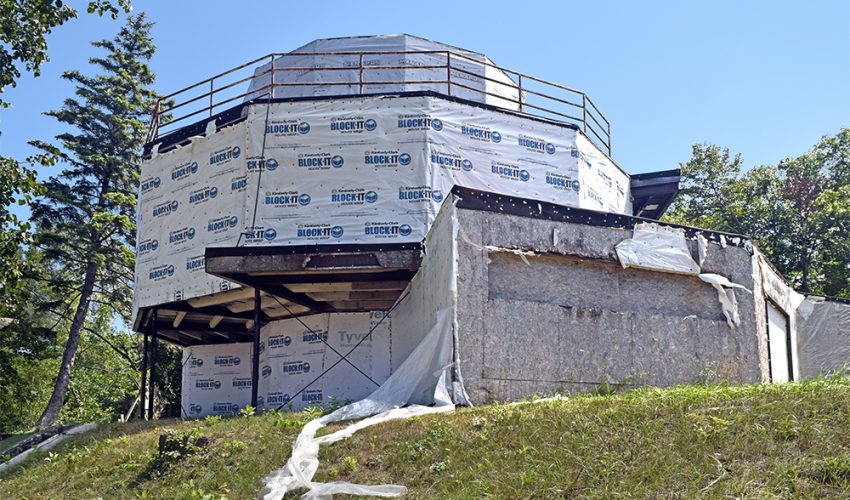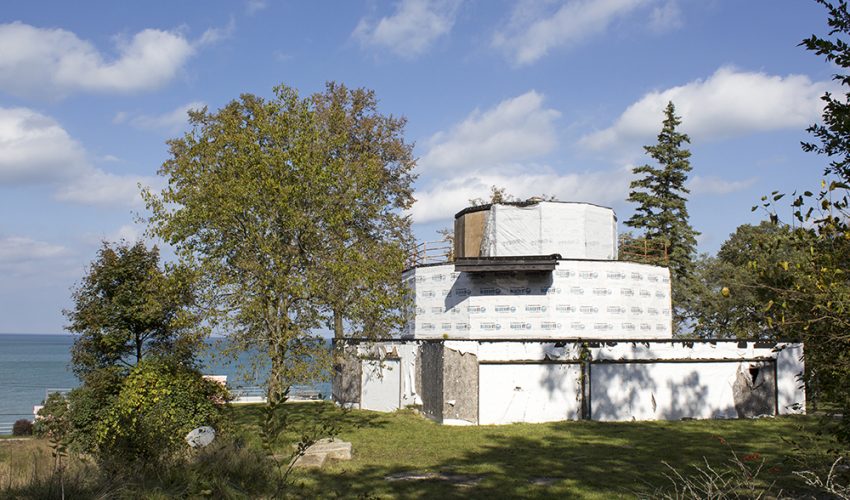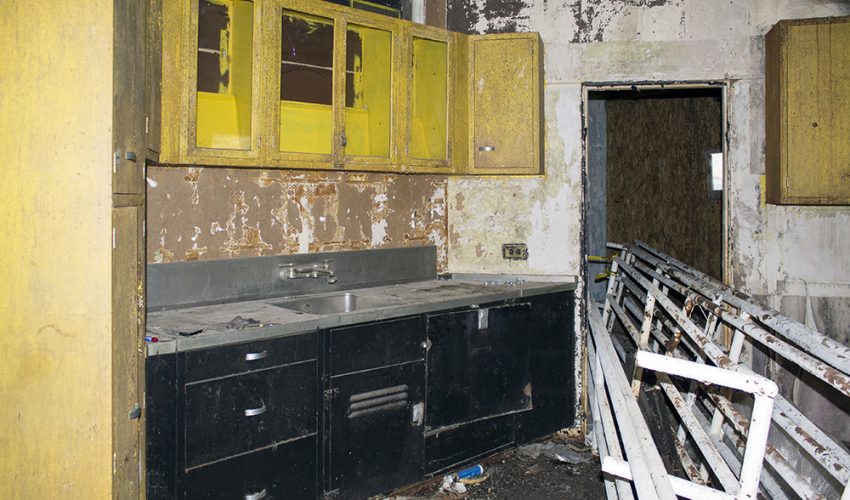House of Tomorrow
America's First Glass House
Indiana Landmarks is supporting efforts to revive the House of Tomorrow, an innovative 1933 World’s Fair exhibit house that predicted how we live today.
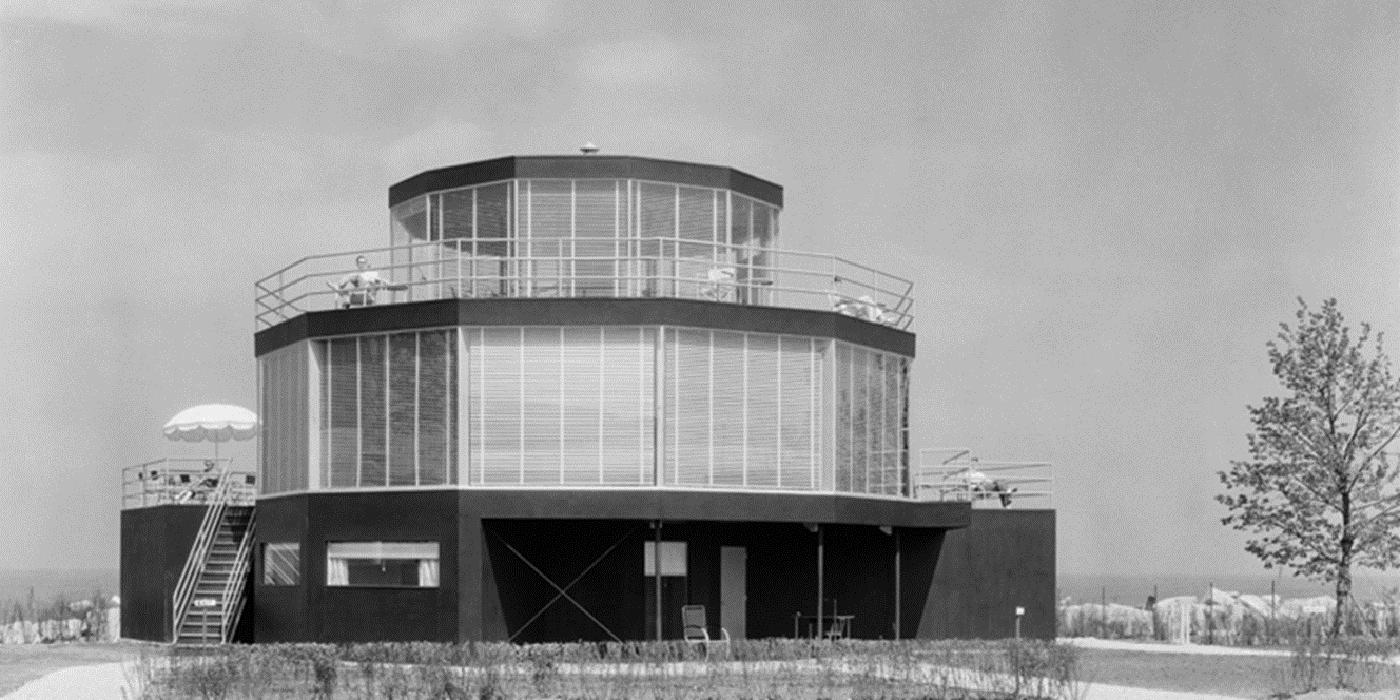
A Monument of American Modernism
In the depths of the Great Depression in 1933–34, the House of Tomorrow at the Chicago World’s Fair offered millions a hopeful vision of a brighter, easier future. Chicago architect George Fred Keck designed the House of Tomorrow to inspire fairgoers to want what they saw: a modern home with floor-to-ceiling glass walls, central air conditioning, an innovative open floor plan, the first General Electric dishwasher, an “iceless” refrigerator, an attached garage whose door opened at the push of a button, an attached hangar for the family airplane.
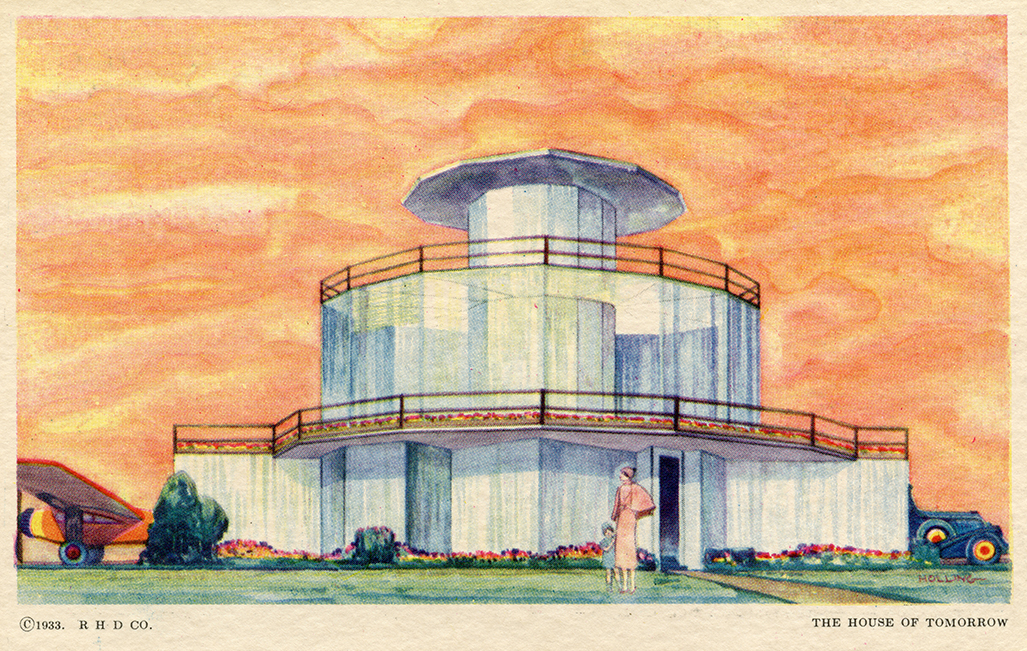
Titled the “Century of Progress,” the fair drew 39 million people to see how advancements in science and technology could improve daily life. Very few structures remain from the fair, but five exhibit houses, including the House of Tomorrow, survived and traveled by truck and barge across Lake Michigan to Beverly Shores, Indiana. The houses remained in private hands until the land they occupied became part of the Indiana Dunes National Park in the ’60s and ’70s.
The houses were deteriorated until Indiana Landmarks leased them from the Indiana Dunes National Park, then sub-leased them to tenants who restored them. It’s a strategy that’s saved four of the homes, but the scale, cost, and complexity of rehabilitating the House of Tomorrow—the most architecturally innovative and historically significant of the collection— put it out of reach for most potential lessees. Significantly altered since its World’s Fair days, the House of Tomorrow has been vacant since 1999.
Media in the ’30s called it “America’s First Glass House.” It predated Mies van der Rohe’s Farnsworth House and Philip Johnson’s Glass House by many years. “The House of Tomorrow…is one of the true early monuments of American modernism, brimming over with a uniquely American idealism and earnestness about the twentieth century,” declared noted architecture critic Paul Goldberger, a contributing editor at Vanity Fair.
To help save it, the National Trust for Historic Preservation on October 19, 2016, designated it a National Treasure. Of the 80-plus National Treasures in the U.S., the House of Tomorrow is the only one in Indiana.
To prepare the House of Tomorrow for timely restoration, Indiana Landmarks collaborated with the National Trust to retain a respected team of architects and engineers. bKL Architecture—a firm with a proven track record working on buildings with significant glass features—partnered with Bauer Latoza Studio, which holds significant experience with restoration projects and National Park Service (NPS) requirements, to develop plans approved by NPS that return the best of the 1933 Keck design while incorporating modern technology and conveniences to make the home livable today.
Now, with the support of $4 million from the Great American Outdoors Act funded through the U.S. Department of the Interior, the future of the House of Tomorrow looks bright once again. In fall 2023, the National Park Service opened the project for bidding, aiming to start the first phase of the landmark’s rehabilitation—restoring the structure’s exterior and its concrete slab floors—in the spring of 2024. Once that work is complete, project leaders will determine the scope of interior work and the property’s final use.

